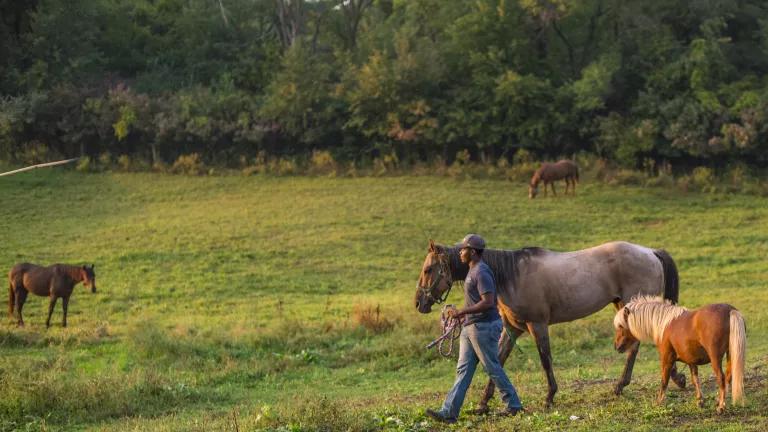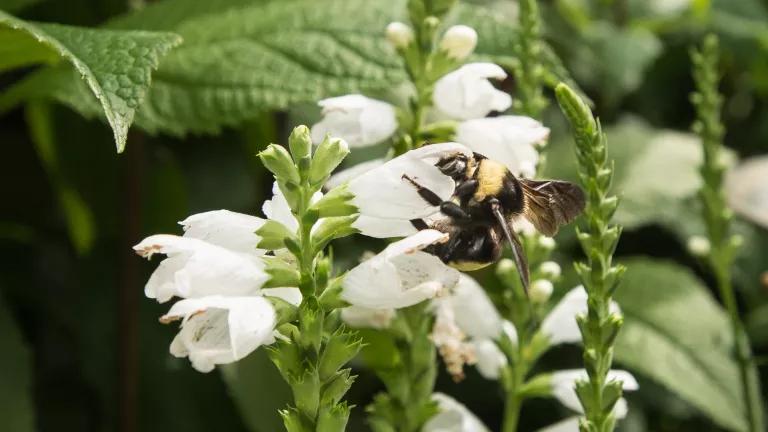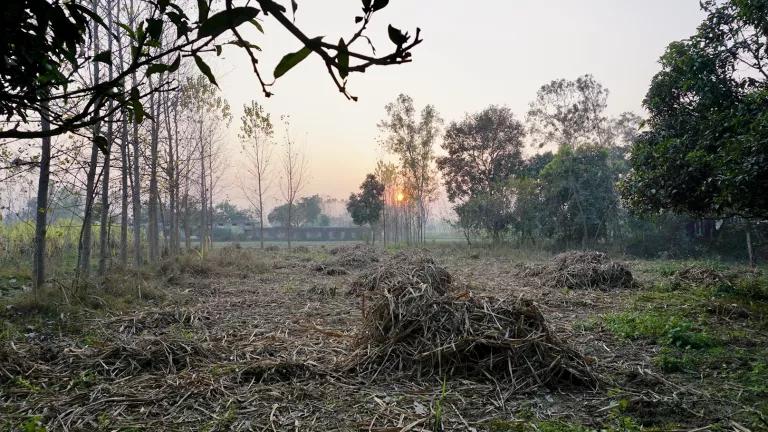Building Back Better—From the Ground Up
Carbon and water storage? Nutrient transportation and communication pathways? Homes for biodiversity? All these services make soil health critical to an economically resilient food system, and we need to invest in rebuilding this precious natural resource.
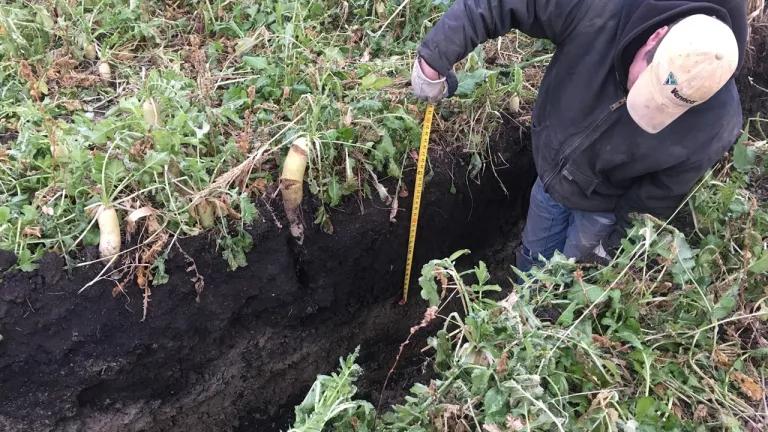
Measuring depth of soil organic matter
Washington D.C. is in the midst of debating how much the federal government should invest in restoring the economy and what should be included in a recovery plan. While one side suggests we should only fund improvements in a narrow list of built structures (i.e. roads, highways, and bridges), the Biden Administration is approaching economic recovery more holistically, asking what we need to do to get America back to work and to make the economy more sustainable and equitable. I implore us to think about why soil, and investments in rebuilding soil, should be included in the conversation.
Soil is the lifeblood of crop production. When healthy, soil can:
- Act as nature’s reservoir. A one percent increase in one acre's soil organic matter can store around 20,000 more gallons of water on that acre.
- Store more carbon. United States soils have the capacity to store 250MMT of carbon.
- House biodiversity above and below ground. There are more soil microorganisms in one teaspoon of healthy soil than there are people on the earth.
- Grow healthy food for us and transport nutrients in soil to plants. Mycorrhizal fungi connect plant roots to soil nutrients that the plant would otherwise not be able to reach.
- Help plants and trees network and communicate pest, disease, and other external pressures to each other.
Carbon and water storage? Nutrient transportation and communication pathways? Homes for biodiversity? All these services make soil health critical to an economically resilient food system. Unfortunately, we’re losing around 4.63 tons of cropland soil per acre per year to erosion, which totals to around 1.7 billion tons of cropland soil per year. In the way our bridges, highways, and roads are crumbling, so too is our soil. And when we lose our soil, we lose the natural services it provides.
We got to this point because of decades of policy decisions and systems that prioritize ‘efficiency’ over quality. We’ve incentivized higher and higher yields, divorced agriculture from the natural environments that make them resilient, separated livestock from cropping systems, and propagated a mentality of needing to ‘control nature.’ We’ve bailed out agricultural operations that continue to use extractive agricultural practices like tillage, monocropping, fallowing, and heavy synthetic fertilizer and chemical use—practices that lead to topsoil erosion and compaction, nutrient runoff, desertification, and loss of biodiversity. How?
The United States has also spent trillions of dollars building dams and reservoirs to divert water from rivers and streams. Climate change is reducing how much surface water we have for agriculture, and so farmers and ranchers turned to pumping groundwater from aquifers, which are also now drying up. Groundwater also serves as an important drinking water source for communities, so drying aquifers adds an additional harm of threatening drinking water supplies. Additionally, crop insurance is the largest federal subsidy program in the United States, but it was not designed with soil health in mind. Thus, taxpayers spend billions of dollars subsidizing farming practices that can degrade soil health, practices that can literally drain the life out of our soil and turn soil into dirt. Soil health degradation is not a problem we can construct our way out of—at least, not in the traditional sense.
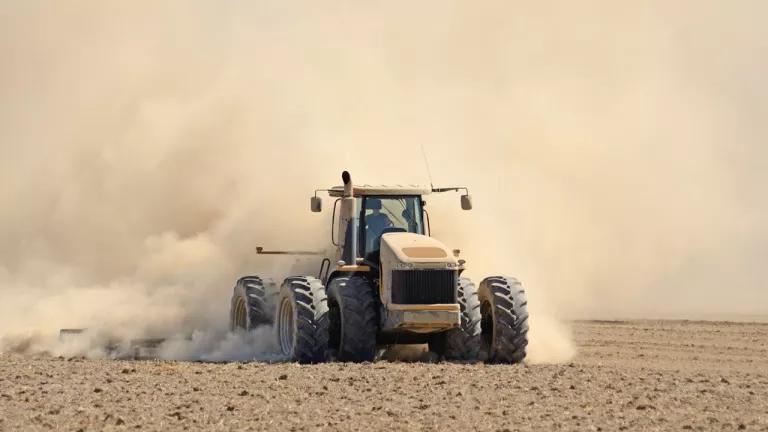
Tillage
Thankfully, regenerative farming offers us a solution. By farming in harmony with nature and the community regenerative farmers understand they must give back more than they take. In other words, they employ agricultural practices and cropping systems that build soil health, pull carbon from the atmosphere, fix nitrogen in the soil, grow the water holding capacity of soil, and, most importantly, adapt to the ecosystems they are a part of (this last one includes choosing crops that are suited for the climates they’re in).
The multifaceted benefits regenerative growers reap are why we should promote regenerative agriculture. Policy can support and reward growers who adopt a regenerative mindset—they’re the ones rebuilding resiliency into their agricultural operations, weathering climate variability, and adapting to changing market demands. We can make these changes through the Farm Bill and U.S. Senator Cory Booker’s Climate Stewardship Act, tweaks to the Water Resources Development Act, reforms to the Federal Crop Insurance Program, and large-scale investments in soil health in President Biden’s infrastructure package. We need to rebuild the natural sponge beneath our feet.
Wizipan Little Elk from the Rosebud Sioux Nation recently taught me about the Seventh Generation Principle. Borne from the Haudenosaunee, the Seventh Generation Principle asks us to think about how our current water, energy, and natural resource decisions affect the livelihoods of people and the planet seven generations from now. Below is an image of healthy contrasted with unhealthy soil: the left side is healthy soil full of roots and soil aggregates, has a thick chocolatey color, and is full of bacteria and mycorrhizal fungi. The other is a dusty lump of sand that literally crumbles under pressure. I know which sample I want seven generations from now. Do you?
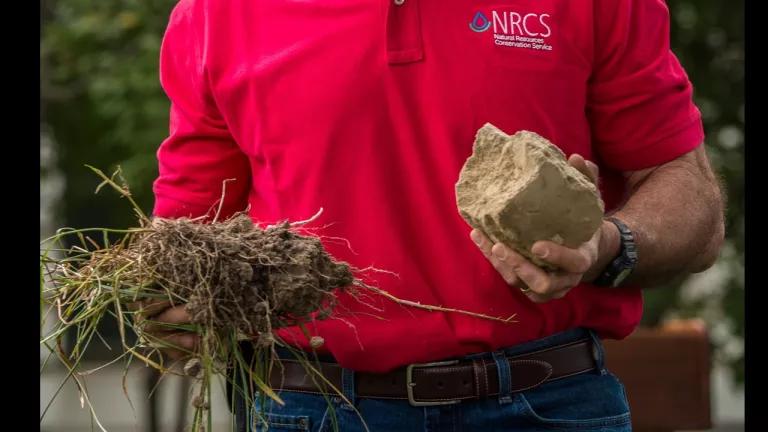
NRCS Soil Comparisons

